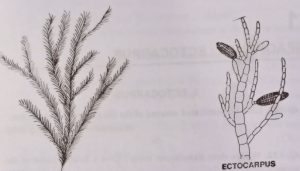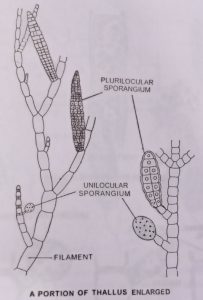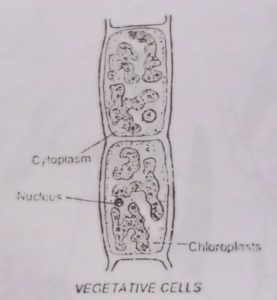BSc 1st Year Botany Pheaophyta Sample Model Practice Question Answer Papers
BSc 1st Year Botany Pheaophyta Sample Model Practice Question Answer Papers: BSc is a three-year program in most universities. Some of the universities also offer BSc Honours. After getting enrolled for BSc, there are certain things you require the most to get better grades/marks in BSc. Out of those, there are BSc Study Material, BSc Sample Model Practice Mock Question Answer Papers along with BSc Previous Year Papers. At gurujistudy.com you can easily get all these study materials and notes for free. Here in this post, we are happy to provide you with BSc 1st Year Botany Pheaophyta Sample Model Practice Question Answer Papers.

BSc 1st Year Botany Pheaophyta Sample Model Practice Question Answer Papers
Ques.1. Give an illustrated account of the life history of Ectocarpus.
Ans.1. Ectocarpus is a widely distributed marine algae that usually remains attached to the substratum by means of rhizoids. Some species may be parasitic or may occur on higher members like order fucales.
Structure
The plant body is copiously branched and consists of brown filaments, which are very slender and give the plants a soft fuzy appearance. It shows heterotrichous habit, i.e., the plant body is made up of two parts, a creeping portion that serves as hold fast and a number of branches, which arises from it.

The erect filaments are usually made up of a single row of cells. Each cell is uninucleate, small, and rectangular and consists of several chromatophores containing brown pigments. Pyrenoids are also present in chromatophores. The growth of the filament is intercalary. The plant is autotrophic in nutrition.
Reproduction
Ectocarpus reproduces both sexually and asexually.
Asexual reproduction: This may take place in the following ways;
(A) This takes place by means of biflagellate zoospores produced in unilocular sporangia which are borne by the diploid sexual plant. They originate as simple, globular each densely filled with protoplasm. The nucleus undergoes a single reduction division followed by simple division. Around each daughter nucleus protoplasm collects to form zoospore. Each zoospore is thus a haploid structure bearing two flagella at its lateral side. On liberation the zoospore swim and settles down and grows into haplid plants.

(B) The asexual reproduction may also take place by formation of diploid biflagellate zoospore, produced in Plurilocular or Neutral sporangia. These are formed by terminal cells on the short lateral branches. The contents of these undergo repeated division followed by wall formation. As a result a number of cubical chambers of almost equal are formed. Because there is no reduction division at any stage, so the zoospore forms diploid plants. On germination, these zoospores form diploid plants.
Sexual reproduction
This ranges from isogamy to anisogamy. The fusing of motile gametes may be of equal size or they may be of unequal size. They are produced inside the plurilocular sporangia borne on haploid thalli. Such sporangia which are borne on haploid thalli, are known as gametangia.

They produce gametes which are haploid in nature plants are usually monoecious.
The isogametes or anisogametes on liberation from some or different plants unite and form a diploid zygote.
This zygote ultimately gives rise to diploid plant which in turn, may bear neutral or unilocular sporangia.
BSc 1st Year Botany Pheaophyta Sample Model Practice Question Answer Papers
BSc 1st Year Sample Model Practice Mock Test Question Answer Papers